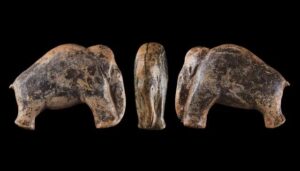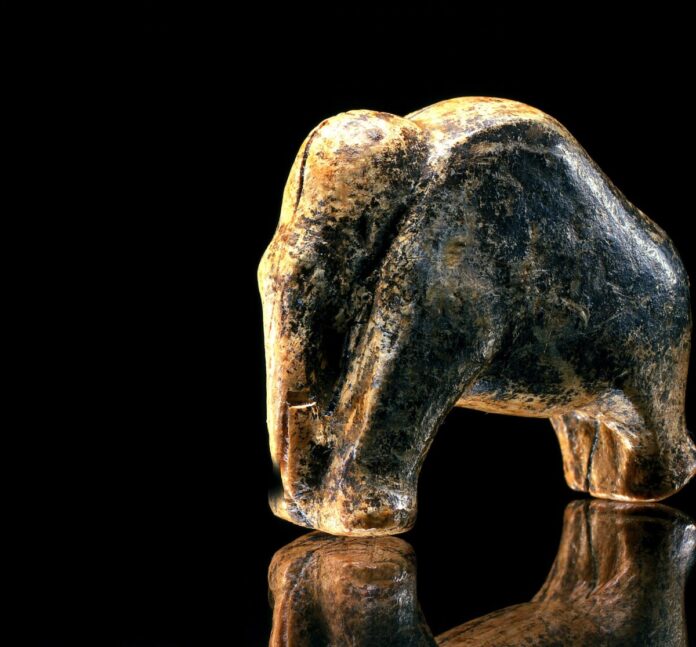A mammoth ivory carving, dating back approximately 35,000 years, has captured the attention of researchers as the oldest known work of art. This remarkable piece, depicting a woolly mammoth, was discovered in Vogelherd Cave, near the town of Stetten-ob-Lontal in Baden-Württemberg, southern Germany. The carving is currently displayed at the Neanderthal Museum in Mettmann, Germany, and stands as a testament to the artistic abilities of early humans.

A Remarkable Discovery at Vogelherd Cave
In 2007, Nicholas J. Conard from the University of Tübingen announced the discovery of an intact carving of a woolly mammoth during excavations at Vogelherd Cave. The site had initially been excavated in 1931 by archaeologist Gustav Riek, also from the University of Tübingen. During that excavation, Riek and his team removed around 7,000 sacks of sediment from the cave, within which the mammoth carving was later found. Radiocarbon dating estimates the piece to be around 33,000 BC.
Exquisite Detail and Artistic Skill
The carving is exceptionally small, measuring just 3.7 cm in length and weighing a mere 7.5 grams. Despite its size, it showcases intricate details, such as a pointed tail, robust legs, an arched trunk, and decorative patterns, including six short incisions and a crosshatch design on the soles of the feet. Another piece found at the site, a m

iniature lion, measures 5.6 cm in length and features an elongated torso, outstretched neck, and approximately 30 finely incised crosses along its spine.
Geological and Historical Context
These carvings are attributed to the Aurignacian culture, which flourished in southern France and is linked to the arrival of modern humans in Europe. Radiocarbon dating of the surrounding sediment in Vogelherd Cave indicates that these artifacts date back to between 30,000 and 36,000 years ago. Some alternative methods suggest an even older age, underscoring the significance of these discoveries.
The Significance of the Find
This discovery highlights Vogelherd Cave as a crucial archaeological site, offering valuable insights into the creative and cultural evolution of early humans. The intricate craftsmanship of these carvings demonstrates that early humans were not merely hunters but also possessed advanced artistic skills, reflecting their ability to perceive and interpret the world around them.
Source: University of Tübingen




















